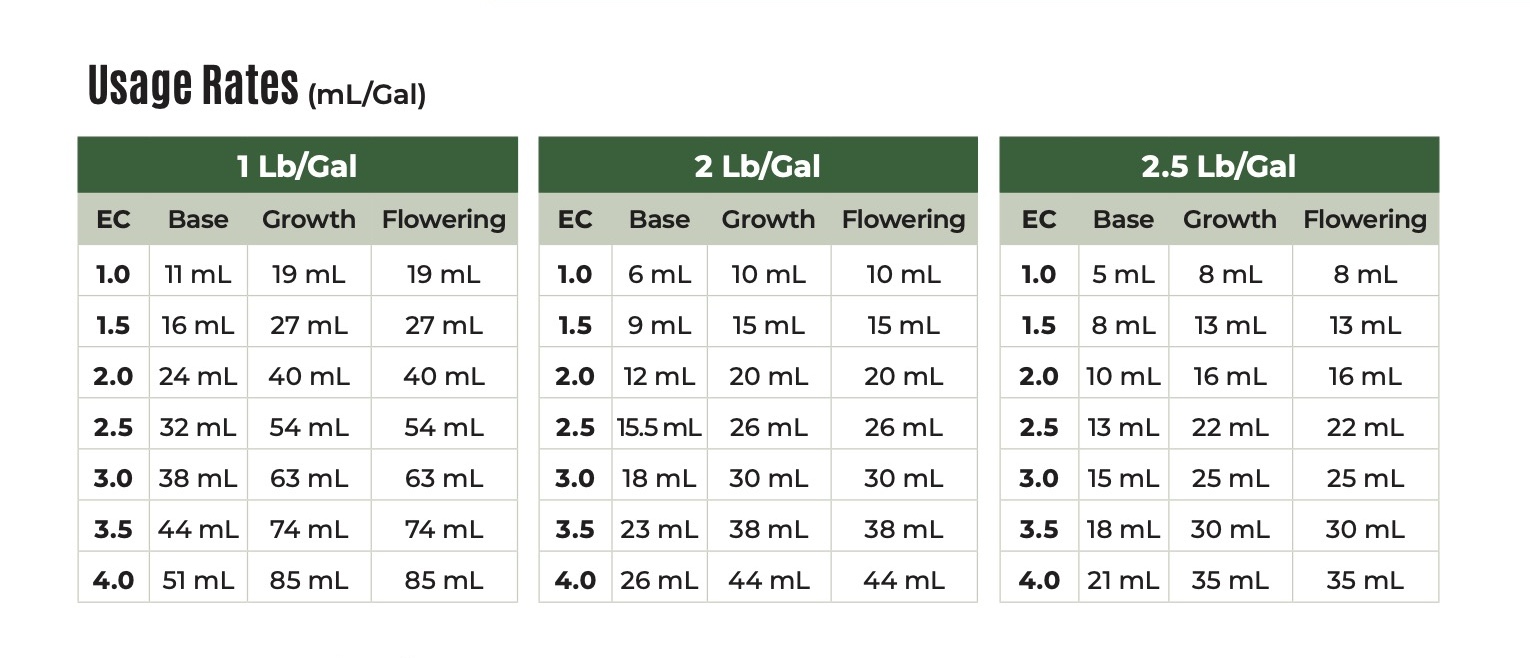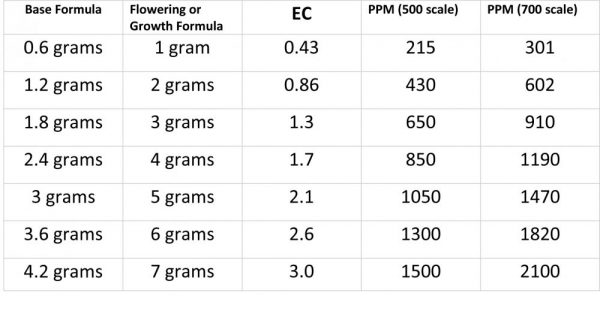
Having a single answer to this question is about as useful as the crazy, convoluted “feeding charts” most companies want you to follow. If we all had identical strains, in identical media, in identical rooms, with identical water, then I would just print the only number you would need right on the bags. Unfortunately (or maybe fortunately) we all have different situations that we grow in.
The good news is that no matter the media you are growing in, HGV nutrients will work exceptionally well providing you understand how to use them properly with your conditions.
The two most common medias I see in commercial grows are Rock Wool and Coco(coir) so I will address those two first.
With Rock Wool, having the ability to precisely control your irrigation timings and duration are very important. The more precise your control, the harder you can drive the plants. I personally run both medias and I feed them at the same EC. The only difference is how long and how frequently each media is irrigated. Root zone EC is controlled by those two things and the feed EC is always constant from the injector system I use. The same thing can be achieved with a reservoir. The beauty of HGV nutrients is that they are designed to be fed at one strength from start to finish so you don’t have to change EC or mix in additives at any time. There are three parts. The Base Formula is used for both veg and flowering at the exact same strength. The growth formula will be used with the base formula during the vegetative phase of plant growth. The flowering formula will be used with the base formula starting on the first day of the flowering phase.
I have achieved the best results in both Rock Wool and Coco dripping at an EC of 3.0 and pH of 5.5-5.7 It is very important to monitor root zone EC and pH and adjust your irrigation frequency and duration to keep the media at the correct feed strength, pH, and water content.
The best way to find out how much base and growth formula or base and flower formula you will need to reach YOUR desired EC level is to start with 1 gallon of the water you use to irrigate with. Everyone’s water is different and will require slightly different amounts to reach the same EC. The following chart will give you a good starting point where you can easily adjust from if necessary. Add the base formula and fully dissolve then add either the Growth or Flowering formula and mix well. The numbers below were taken using Reverse Osmosis(RO) water with a starting ec of less than 0.1. Your actual numbers might be slightly different based on your water supply. The important thing to note here when making adjustments is that the ratio between the Base formula and either the Growth or Flowering formula will always be 0.6:1 It should be fairly simple to reach any desired EC level following the recommendations below. Once you know how much of each formula it takes to hit your target EC, simply multiply the grams of each times the gallons you need to fill your reservoir.
For other growing media, it is up to the grower to determine the correct EC for the particular crop and environment. Soil will usually require a lower EC while soilless mixes, DWC, NFT, and other hydroponic applications can run at the higher levels on this chart. If you are unsure as to what EC you should be running, please email or call us to discuss your particular situation.

This chart is used to help you determine how much of each type you will need to reach the desired EC. YOUR numbers might be slightly different due to the differences in source water. You can add or subtract the amount in any column to raise or lower your actual ec. As an example, if you want to hit an ec of 3.0, start with 7 grams of growth formula and 4.2 grams of base formula. If your actual ec is LOWER than on the chart, look at the smaller amounts to determine how much more to add. Lets say you end up at 2.6 instead of 3.0, from the chart, 1 gram of growth formula and 0.6 grams of base formula will give you approximately .43 ec. Adding that amount should then bring your ec from 2.6 closer to 3.0. If you hit a higher ec than on the chart, you can reduce the amount per gallon. Another example, If you put 7 grams of growth formula and 4.2 grams of base into a gallon of water and you hit an ec of 3.4, you can look at the chart and see that by reducing the amounts by 1 gram of growth formula and 0.6 grams of base formula, you should be closer to 3.0ec. You can also divide the amounts equally if you fall in between the numbers on the chart! i.e., 0.5 grams of growth formula and 0.3 grams of base formula.
Making concentrates for Fertigation systems or long term storage of the products.
Maximum solubility at room temperature is 2.5lbs per gallon of the growth or flowering formulas and 3lbs per gallon of the base.
At 2.5 lbs per gallon, a 25lb bag would be dissolved in 10 gallons of water. Stock tanks can be any size you want. Size only determines how often you need to fill them up. The concentration will always be the same.
The easiest way to set the injection rates is to figure out what the total ec you want to run is. Lets use an ec of 3.0 as an example. Multiply 3.0 x 0.6 and you get 1.8, that would be the level you want from the growth or flowering. 3.0 – 1.8 = 1.2 That would be the level from the base formula. This math works for any ec level you want to run.
Once you know how much each part should be contributing, you simply adjust each doser individually to get the correct ec and then run them in series to get the total. For the Growth or Flowering injector, start at 175:1 and adjust from there. For the base formula injector, start at 225:1 and adjust from there.